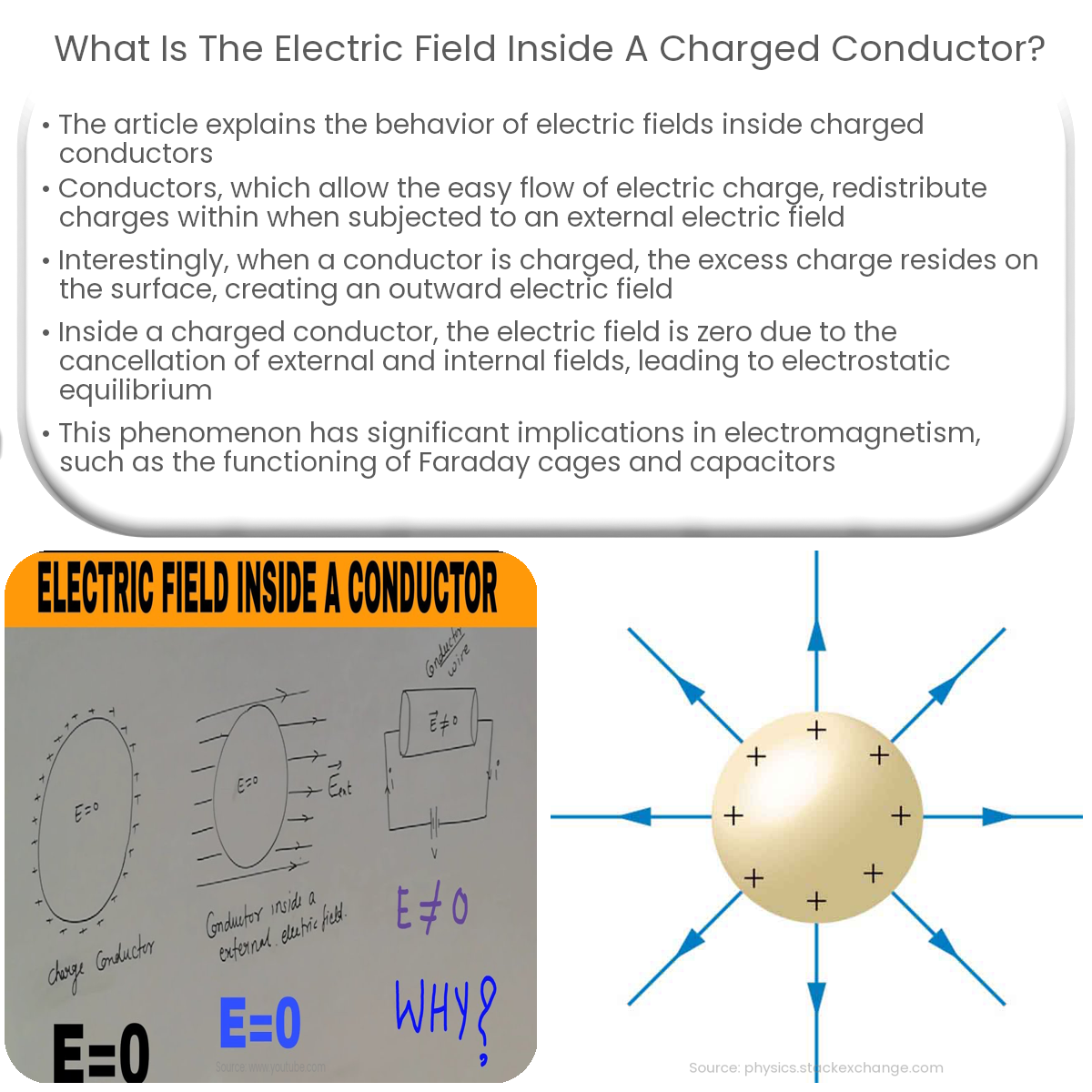The electric field inside a charged conductor is zero due to the redistribution of charges that counteract any external electric field.
Understanding Electric Fields Inside Charged Conductors
Electric fields are an essential concept in understanding electromagnetism, as they describe the influence of electric charges on their surroundings. One interesting aspect of electric fields is their behavior inside a charged conductor. To understand this, we need to first recall some fundamental properties of conductors and their interaction with electric fields.
Conductors and Electric Fields
Conductors are materials that readily allow the flow of electric charge. They typically consist of a lattice of positively charged ions, surrounded by a sea of free, negatively charged electrons. When a conductor is subjected to an external electric field, these free electrons are easily displaced, redistributing themselves within the conductor until they reach an equilibrium state.
Charge Distribution in Conductors
When a conductor is charged, the excess charge resides on its surface. This occurs because the free electrons within the conductor repel each other and move to minimize the repulsive forces between them. As a result, the charge distributes itself uniformly on the outer surface of the conductor, creating an electric field that extends from the surface into the surrounding space.
Electric Field Inside a Charged Conductor
Inside a charged conductor, the electric field is zero. This intriguing result arises due to the nature of conductors and their interaction with electric fields. When an electric field is applied to a conductor, the free electrons within the conductor redistribute themselves to counteract the applied field. This rearrangement of charges continues until the electric field within the conductor is completely neutralized.
In other words, the charges on the surface of the conductor generate an electric field that exactly cancels the external field within the conductor. At this point, the conductor is said to be in electrostatic equilibrium, and there is no net force on any charge inside the conductor. Consequently, the electric field inside the charged conductor is zero.
Implications and Applications
The fact that the electric field inside a charged conductor is zero has several important implications and applications in the field of electromagnetism. For instance, this property forms the basis for the operation of a Faraday cage, which is a shielded enclosure that protects its contents from external electric fields. Moreover, the principle of zero electric field inside a conductor is critical in understanding the behavior of capacitors and their ability to store charge.


